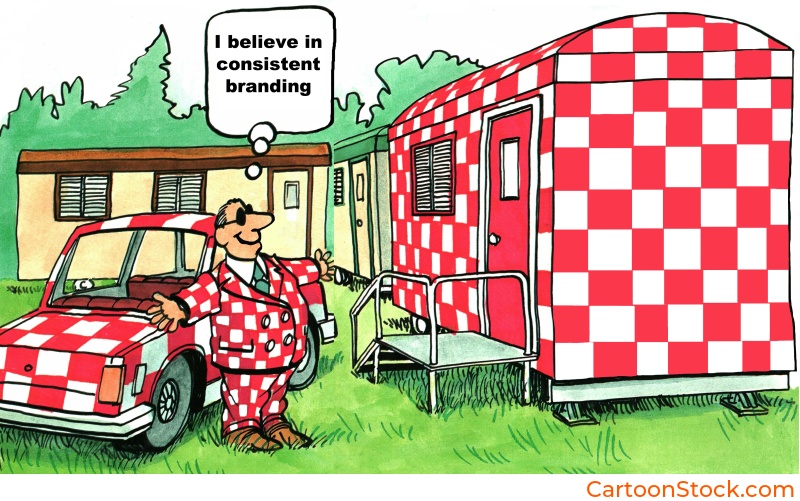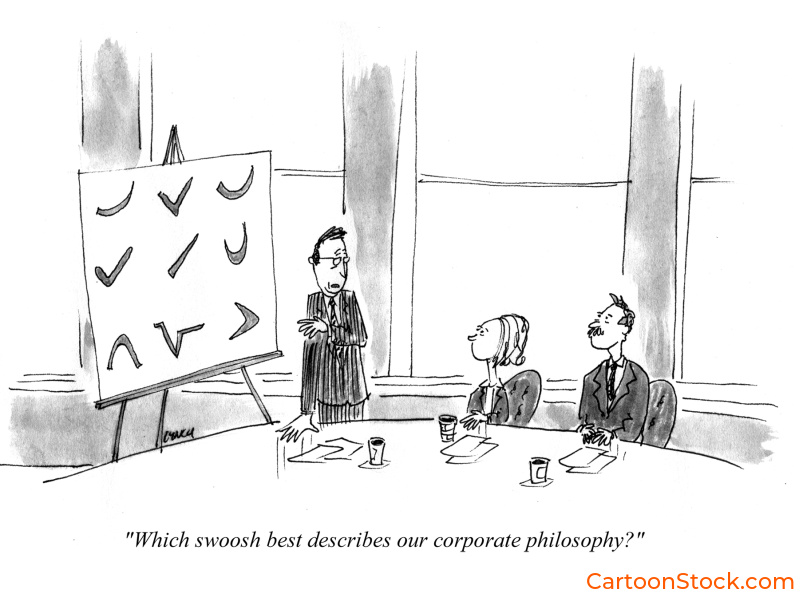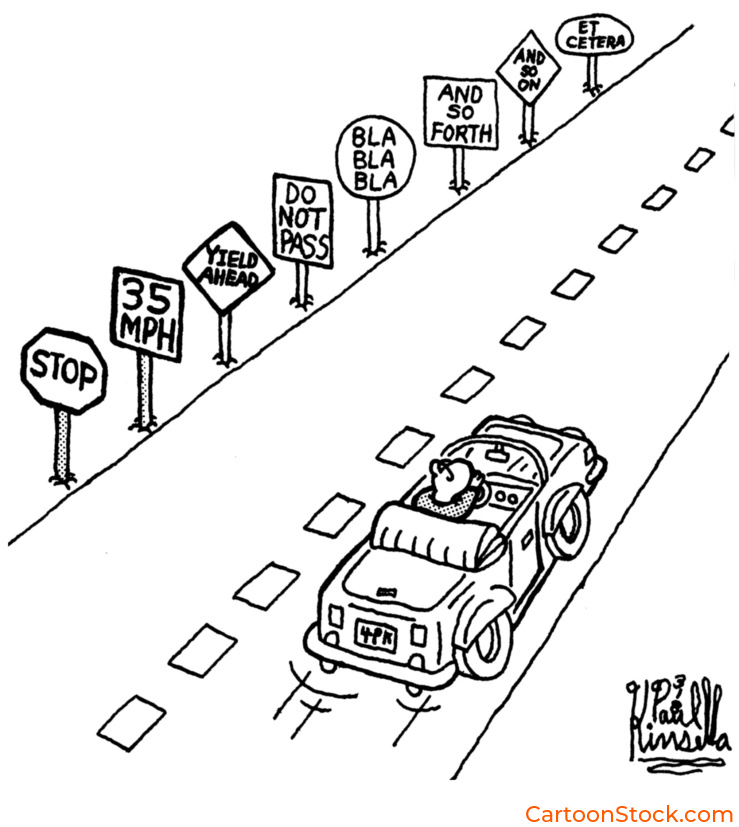Cartoons aren’t just entertainment—they’re powerful marketing tools. Knowing how to choose the perfect cartoon for your brand or marketing campaign can transform your communication strategy. When chosen correctly, cartoons make complex ideas digestible, add personality to dry content, and create memorable brand experiences that resonate with audiences.
However, selecting the wrong cartoon can damage your brand reputation and confuse your message. This comprehensive guide will show you exactly how to choose the perfect cartoon for your brand or marketing campaign, helping you enhance campaigns and strengthen brand identity.
Part of our using CartoonStock for business and marketing guide
Why Cartoon Selection Matters for Brand Success
The cartoon you choose becomes an extension of your brand voice. It communicates your values, personality, and professionalism to your audience before they read a single word of your content.
Consider this: A financial services company using slapstick humor might appear unprofessional, while a children’s brand using dry, intellectual wit could seem disconnected from its audience. The key lies in strategic alignment between your cartoon choice and brand objectives.
Let’s break down the key steps in how to choose the perfect cartoon for your brand or marketing campaign—from message clarity to humor alignment.
Step 1: Define Your Core Campaign Message
Before browsing cartoon libraries, establish clear communication goals. This foundation prevents impulsive choices that look appealing but serve no strategic purpose.
Ask These Essential Questions:
- Purpose: Are you educating customers, entertaining prospects, or inspiring action?
- Emotion: Do you want audiences to feel informed, amused, motivated, or reassured?
- Outcome: What specific response do you want from viewers after seeing your cartoon?
- Context: Where will this cartoon appear, and what other content surrounds it?
Write down your answers. These become your cartoon selection criteria, ensuring every choice supports your broader marketing strategy.
Step 2: Align Cartoons with Your Brand Voice
Your brand voice should remain consistent across all content, including visual elements. Cartoons that clash with your established tone weaken brand recognition.
Brand Voice Matching Guide:
- Professional yet approachable brands work well with gentle satire, observational humor, and clever visual metaphors that demonstrate expertise without intimidation.
- Bold and innovative companies can leverage edgier humor, exaggerated characters, and unconventional visual styles that showcase creativity and forward-thinking attitudes.
- Traditional and trustworthy organizations benefit from clean, classic cartoon styles with timeless humor that reinforces stability and reliability.
- Playful and energetic brands thrive with vibrant, dynamic cartoons featuring expressive characters and situational comedy that matches their enthusiastic personality.
Step 3: Match Humor Styles to Your Target Audience
Understanding your audience’s humor preferences prevents miscommunication and ensures your cartoons resonate rather than alienate.
Audience-Specific Humor Guidelines:
- Internal team communications can include industry-specific jokes, insider references, and more sophisticated humor since employees understand company culture and terminology.
- Customer-facing content requires broader appeal. Focus on universal experiences your customers face, avoiding inside jokes or references that exclude potential clients.
- Executive presentations demand intellectual humor over physical comedy. Visual metaphors, clever wordplay, and insightful observations work better than slapstick or irreverent jokes.
- Social media audiences respond to trending topics, relatable situations, and shareable content that sparks engagement and conversation.
Step 4: Optimize Cartoon Formats for Different Marketing Channels
Cartoon effectiveness depends heavily on where and how you display them. Each marketing channel has unique requirements that influence your selection criteria.
Channel-Specific Format Requirements:
- Email marketing campaigns perform best with horizontal or square cartoons that display well across devices. Ensure text remains readable at smaller sizes.
- Social media posts need bold, attention-grabbing visuals that work in square formats. High contrast and clear imagery help cartoons stand out in crowded feeds.
- Presentation slides require horizontal cartoons with simple compositions that remain visible from the back of conference rooms.
- Print materials demand scalable line art that reproduces clearly at various sizes without losing detail or impact.
- Blog posts and articles benefit from topic-specific cartoons that directly support your written content and encourage social sharing.
Step 5: Ensure Cartoons Enhance Rather Than Distract
Effective marketing cartoons support your message without overwhelming it. They should feel like natural extensions of your content, not random additions that confuse your audience.
Characteristics of Message-Supporting Cartoons:
- Relevance: The cartoon directly relates to your topic, industry, or audience pain points.
- Clarity: Viewers understand the connection without lengthy explanations or complex interpretations.
- Brand consistency: The humor style, visual aesthetic, and message tone align with your established brand identity.
- Value addition: The cartoon provides insight, emotion, or memorability that strengthens your overall communication.
Warning Signs of Distracting Cartoons:
- Topic confusion: The cartoon seems randomly selected or requires significant explanation to connect with your message.
- Tone mismatch: The humor style contradicts your brand voice or audience expectations.
- Boundary pushing: The content risks offending or alienating segments of your target audience.
- Overcomplication: The cartoon introduces unnecessary complexity that detracts from your core message.
Step 6: Develop Consistent Visual Themes for Ongoing Campaigns
Building cartoon consistency across multiple touchpoints creates stronger brand recognition and professional cohesion in your marketing efforts.
Strategies for Visual Consistency:
- Artist selection: Choose cartoons from the same illustrator to maintain consistent artistic style across your campaign materials.
- Character continuity: Feature recurring characters or visual elements that become associated with your brand messaging.
- Color coordination: Select cartoons that complement your brand colors or maintain consistent color palettes throughout your materials.
- Style standardization: Establish guidelines for cartoon complexity, humor level, and visual treatment that team members can follow when selecting future images.
When planning multi-use campaigns across different materials and timeframes, review our license pricing to ensure comprehensive coverage for all your marketing touchpoints.
Testing and Optimization Strategies
Don’t rely on assumptions about cartoon effectiveness. Implement testing strategies to validate your choices and improve future selections.
A/B Testing Approaches:
- Email campaigns: Test different cartoon styles in subject lines or headers to measure open and click-through rates.
- Social media: Compare engagement metrics between posts featuring different cartoon approaches to your audience.
- Website content: Monitor bounce rates and time-on-page metrics for articles featuring various cartoon styles.
- Presentation feedback: Survey audience responses to different cartoon approaches in your speaking engagements.
When testing across multiple channels, ensure your chosen license selection covers all intended testing scenarios to avoid licensing gaps.
Common Cartoon Selection Mistakes to Avoid
Learning from frequent errors helps you make better choices and avoid costly communication failures.
Mistakes That Damage Brand Effectiveness:
- Generic selection: Choosing cartoons solely based on visual appeal without considering message alignment or audience appropriateness.
- Trend chasing: Selecting cartoons based on current memes or viral content that quickly becomes outdated or irrelevant.
- Assumption making: Believing your personal humor preferences automatically match your target audience’s tastes.
- Context ignoring: Using the same cartoon across all channels without considering format requirements or audience differences.
- License overlooking: Failing to secure appropriate usage rights for your intended applications and distribution channels. Always review our licensing terms and conditions before finalizing your selection to avoid usage violations and potential legal complications.
Advanced Tips for Professional Cartoon Selection
Elevate your cartoon strategy with these expert-level considerations that separate amateur from professional marketing communications.
Professional Enhancement Techniques:
- Cultural sensitivity: Research cultural implications of cartoon imagery and humor styles, especially for international or diverse audiences.
- Accessibility consideration: Ensure cartoons work for colorblind viewers and include appropriate alt-text descriptions for screen readers.
- Brand evolution planning: Select cartoons that can grow with your brand rather than limiting future messaging flexibility.
- Competitive differentiation: Analyze competitor cartoon usage to identify opportunities for distinctive visual positioning in your market.
Measuring Cartoon Marketing Success
Establish metrics to evaluate cartoon effectiveness and inform future selection decisions.
Key Performance Indicators:
- Engagement metrics: Track social shares, comments, and reactions to cartoon-featuring content compared to text-only alternatives.
- Retention rates: Monitor how cartoons affect email open rates, website session duration, and content completion rates.
- Brand recall: Survey audiences about message memorability in cartoon-supported versus traditional communications.
- Conversion impact: Measure how cartoon inclusion affects desired actions like newsletter signups, download completions, or purchase decisions.
Getting Started with Your Cartoon Strategy
Begin implementing these strategies immediately to improve your marketing communication effectiveness.
Your Next Steps:
- Audit existing content: Review current cartoon usage against these guidelines to identify improvement opportunities.
- Document brand guidelines: Create clear criteria for future cartoon selection that team members can reference and follow.
- Test systematically: Implement A/B testing protocols to validate cartoon choices and build data-driven selection processes.
- Monitor performance: Establish tracking systems to measure cartoon impact on your key marketing metrics.
- Refine continuously: Use performance data to evolve your cartoon strategy and improve audience resonance over time.
Conclusion
Choosing the right cartoon for your brand requires strategic thinking, audience understanding, and systematic testing. When done correctly, cartoons become powerful tools that humanize your brand, clarify complex messages, and create memorable experiences that drive business results.
Remember that how to choose the perfect cartoon for your brand or marketing campaign isn’t about picking the funniest image—it’s about discovering visuals that align with your brand identity and audience preferences.
Start implementing these strategies today, and watch how the right cartoons transform your marketing communications from forgettable to unforgettable.
Keep Reading
- How to Use CartoonStock Cartoons in Email Marketing Campaigns – Boost open rates and engagement with strategic cartoon placement
Related Posts
- How CartoonStock’s Search Tools Help You Find the Perfect Image
- Using CartoonStock Cartoons in Company Newsletters
Q&A: Choosing the Right Cartoon for Your Brand
Q: How do I know if a cartoon is on-brand for my campaign?
A: Ask whether the cartoon matches your tone, values, and audience expectations. If it feels natural alongside your existing content and you can easily explain why it fits, you’re on the right track. Test it with a small internal team first.
Q: What if I find a cartoon I love but it’s too edgy for my audience?
A: Consider the context and your audience’s comfort level. If it feels like a risk, trust your instincts and look for something with similar humor but softer delivery. It’s better to be slightly conservative than to alienate potential customers.
Q: Can I use the same cartoon across multiple marketing channels?
A: Yes, but ensure you have the appropriate license that covers all intended uses. CartoonStock makes it easy to select usage rights for email, web, social media, or print applications. See our pricing page for multi-channel licensing options that fit your campaign scope. Always verify licensing terms before multi-channel deployment.
Ready to elevate your brand communications with strategic cartoon selection? Begin by auditing your current visual content against these guidelines and identifying your biggest improvement opportunities.




